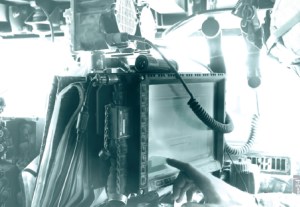Many people jump into the build or buy decision based on past experiences or make too quick of a decision due to short term time constraints and, in doing so, waste valuable total project time and resources that could be been saved by selecting a different path. From my experience, I find that companies which fully engage in the evaluation process of the buy decision proceed down this path, whether it is at the hardware, software or system level.. Sometimes, building in-house is required or perceived as the best path, but other times buying is best. Defense contractors should really step back, carefully weigh the pros and cons, and make the decision that is just right for their company. Maybe I can help by summarizing some important advantages of pre-validated system solutions which are worth considering:
1. They conserve time and budget resources
Of course, it can be a daunting task for developers to determine which system elements should be designed versus which should be purchased off-the-shelf. Development demands time and budget resources, while off-the-shelf options can elevate the risk of paying for unnecessary performance or features. But with the pressure of agile acquisition initiatives and the need to quickly and economically meet Proof of Concept (PoC) requirements, defense contractors now – more than ever – are benefiting from pre-validated system solutions that provide a competitive advantage. Created as a design foundation for mil/aero developers, systems such as Kontron’s COBALT are providing such a trendsetting alternative to building a system from scratch. Where a custom design traditionally takes a large team of hardware, software and application developers, rugged COMs-based systems help reduce the size of engineering teams required to get a custom mil/aero system to market. Speeding development even further, COBALT’s flexible I/O combinations can be designed in using the application-specific customization of the carrier board. The whole system capitalizes on the overall design value and flexibility of the Computer-on-Module platform itself, which incorporates rugged board-to-board connectors to connect chipset I/O to carrier board. These complete systems are then rigorously tested at extreme environmental conditions for temperature, EMI/EMC, shock & vibration, and other requirements. So the “buy” decision is made a lot easier because of the inherent value of standards-based scalability, reliability and flexibility provided by these pre-validated systems.

2. They work with known and established system profiles
Our COBALT – for example – offers a series of known and established system profiles which provide an essential asset in making the decision to buy vs. build by helping engineers to determine the ideal configuration and optimum starting point for customized performance. Basic performance configurations consider the highest priority mil/aero computing needs, and include increased storage capabilities with either fixed or removable solid state drives, wireless connectivity options such as Wi-Fi, WiMAX or a 3G/4G modem, or additional network port connections via an L2/L3 GbE switch.
3. Their integrated devices that can be removed and replaced in the field
Flexible storage requirements are common to military applications. It should be possible to remove and replace storage devices directly in the field. Security concerns must be considered and will vary depending on the application – in some instances, removal of the storage device itself is preferable to having its data transmitted over a network interface. Modern Systems provide a fast and proven foundation for design of these types of applications.
4. They offer an optimized base configuration for systems handling video capture, compression, storage and analytics
Systems based on the COM Express® standard already have an advantage in these types of applications because they capitalize on long-life video support which is integrated natively within the chipset. This helps OEMs and developers moving quickly to market, streamlining design of applications such as solid-state video recording, remote video surveillance, multi-camera security and recording, video acquisition and archiving. And while the diversity of situational awareness applications continues to increase, the design of these systems remains streamlined and fast.
5. They can be simply updated and upgraded
Pre-validated systems allow system developers to easily adapt to new updated or reconfiguration system requirements using a variety of storage types and capacities. When higher capacity or better storage options become available, the system does not need to be replaced or extensively changed. So the long-term flexibility is assured, and designers are not forced to build systems from the ground up each time application needs change. And developers can also quickly further their designs by adding custom applications on top of the network server capability – for example by creating high performance systems optimized for evaluating data, communicating information or delivering command alerts in real-time. In addition, by integrating an expansion mezzanine option(s) available with COBALT allows developers to create new systems without significantly modifying the original base design. For long-term upgradability, system performance is adaptable by swapping out modules to access processor advancements. Due to design similarities and our overall design approach, re-validation of the system is kept to a minimum. The competitive value of this is high, as the same design can be reused in even smaller systems. This is a win for OEMs working to extend functionality while reducing costs associated with customization and development. Design requalification is not required, and the system’s baseboard stack provides all necessary interconnects. By enabling the ability to focus on application development as a true, long-term differentiator, this concept is a key tenet in making a well considered buy vs. build decision.
But ultimately your specific build vs. buy decision – and its ramifications – are on you. But maybe this small summary helps you to carefully weigh the pros and cons. If you have anything else to add, please do so in writing a comment! If you want to know more about our COBALT system, you can also download our Whitepaper.

{{comment.comment}}